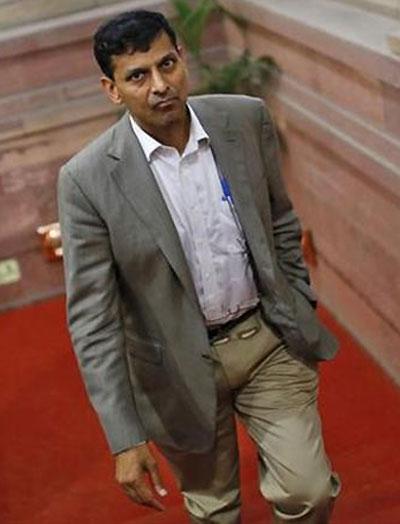
Inflation is rearing its head again, with both retail and wholesale prices rising at a higher rate in March than in February, when the pace of increase had moderated noticeably.
This diminishes hopes of an early rate cut by the Reserve Bank of India, even as growth refused to perk up.
Wholesale Price Index-based inflation rose to a three-month high of 5.7 per cent in March, from a nine-month low of 4.68 per cent in February.
This increase was mainly due to supply-side constraints, primarily in certain foods.
. . .
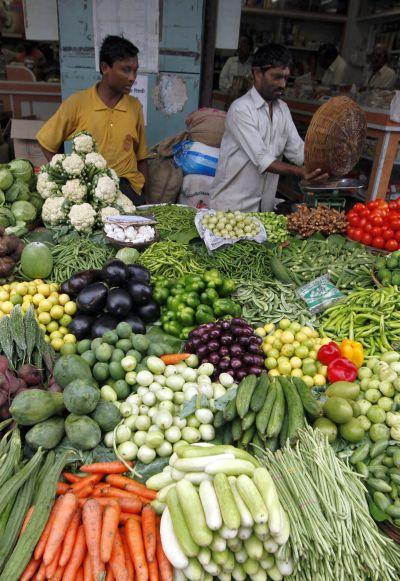
Retail inflation, as measured by the Consumer Price Index, increased to 8.31 per cent in March against 8.03 per cent in February, led by a sharp rise in the prices of vegetables and fruit.
The increase in rural areas was 8.89 per cent and in urban areas, 7.51 per cent, showed the official data. These were issued on Tuesday.
. . .

 RBI's next policy review is on June 3.
RBI's next policy review is on June 3.
It has set a target of eight per cent CPI inflation by January 2015.
If the increase in retail prices doesn’t decelerate in April, it might not ease the monetary policy stance.
In the review on April 1, the central bank had kept the key policy rate unchanged.
. . .
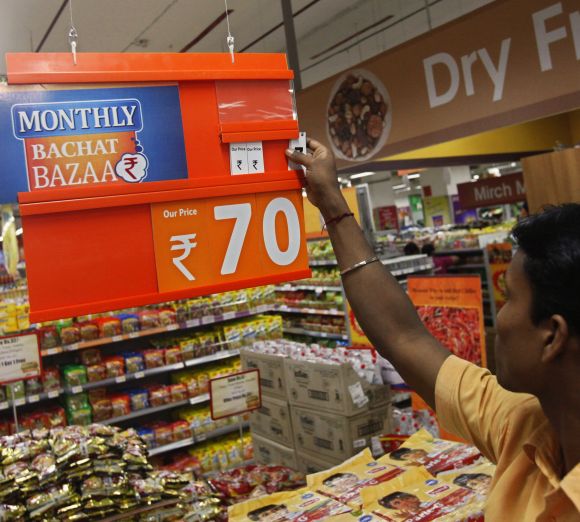
CPI inflation increased on account of a 17.19 per cent rise in fruits, 16.8 per cent in vegetables, 11.02 per cent in milk and products, 9.61 per cent in cereals and products, and 9.54 per cent in eggs, fish and meat.
Core inflation (excluding items that face temporary price volatility such as food and fuel) remained unchanged at the February level of 7.9 per cent, according to estimates by analysts.
WPI inflation stood higher in all the three broad categories -- primary articles (unprocessed items), fuel and power, and manufactured goods.
Core inflation increased from 3.2 per cent in February to 3.5 per cent in March.
. . .
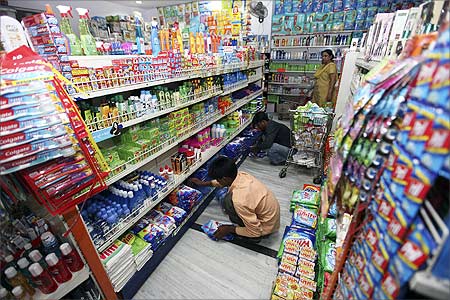
“We maintain that the non-food, non-fuel component is likely to edge higher as well, partially impacted by the low base effect setting in,” said Bhupali Gursale, economist, Angel Broking.
Though RBI now takes the CPI as the barometer for deciding monetary policy, WPI is also an important indicator in some cases.
“It suggests that inflation pressures remain elevated.
"There will most likely be no further rate increases in the current cycle but any previously small chance of a near-term rate cut is now off the table completely,” said Glenn Levine, senior economist, Moody's Analytics.
WPI food inflation went up to 9.9 per cent in March from 8.12 per cent in February. With fears of an El Niño weather effect hitting the monsoon, food inflation might see a further rise in the coming months.
. . .
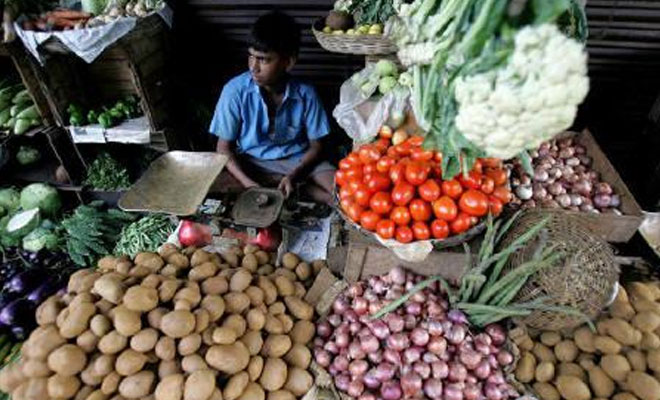
Within the food category, vegetables prices increased 8.57 per cent, compared with 3.99 per cent in February, while fruits turned more expensive by 16.15 per cent in March from 9.92 per cent in the earlier month.
However, prices of pulses continued to decrease, though at decelerating rate of 1.29 per cent in March from 4.12 per cent in February.
Protein-based items also turned more expensive.
Eggs, meat and fish were dearer by 11.19 per cent against 9.69 per cent a month before.
Fuel and power prices, which account for 15 per cent of the index, rose 11.22 per cent against 8.75 per cent earlier, led by higher cooking gas and diesel prices.
Manufactured product prices, declining in recent months, rose 3.23 per cent against 2.76 per cent in February.
Manufactured goods account for 65 per cent of the index.
. . .

The data showed the January inflation number had also been revised upward to 5.17 per cent, against the earlier estimate of 5.05 per cent.
Industry has urged the government to address supply constraints to prevent a further jump in prices of various commodities, at a time when it is seeing high borrowing and raw material costs.
It also cautioned that the central bank should not try to address these supply issues by using interest rates as a tool.
“Demand in the economy is weak, as is evident from all indicators of growth.
. . .

The rupee has also strengthened, which has prompted the government to start reducing retail prices of petrol.
"Therefore, this rise in WPI inflation has to be attributed to supply-side constraints in the agricultural side,” said Chandrajit Banerjee, director-general, Confederation of Indian Industry.
Sidharth Birla, president, Federation of Indian Chambers of Commerce and Industry, said tackling food inflation should be top priority for the incoming government.
“Unless this critical economic variable is brought under control, we could see a lasting impact on the overall growth scenario,” he said.
As per the data released by today, the January inflation number has also been revised upward to 5.17%, against the earlier estimate of 5.05%.
. . .